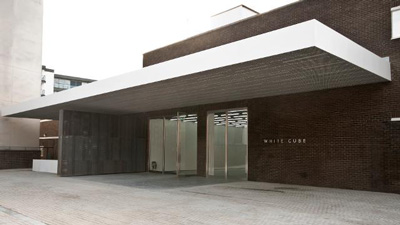The History of Bermondsey: An Insight into an Ever-Changing London Borough
Posted on 17/01/2023
Bermondsey is a bustling and vibrant London borough that has come alive in recent years. It is located on the south bank of the River Thames, just east of Tower Bridge and close to the City of London. Bermondsey’s history dates back to Roman times, when it was known as Verulamium and served as an important settlement for trade between Britain and Europe. Since then, it has been at the centre of several key events in British history, including the founding of some of London’s most iconic institutions. In this article, we’ll take a look at some key moments in the area’s past and explore how they have shaped its present-day identity.

Early History: From Roman Times to Medieval England
The earliest recorded mention of Bermondsey comes from around 43 AD when it was known as Verulamium – a major trading post on Watling Street (now Stane Street). This gave it access to both continental Europe via Dover and Kent, and parts of southern England via Salisbury Plain. During this period, Verulamium was home to a thriving market which specialised in animal skins and grain products. As well as facilitating cross-continental trade, the settlement also became renowned for its pottery production – fragments of which can still be found today.
In 1067 William I granted part of the area now known as Bermondsey Abbey to St Saviour's Monastery – one of only two Benedictine monasteries founded in England during his reign. The abbey became an important religious centre for several centuries until Henry VIII dissolved all monasteries after he broke with Rome in 1536–1539. At this point, much of Bermondsey passed into private ownership but continued to serve as an industrial hub due to its strategic location next to the Thames. Shipbuilding yards flourished here during this time while leatherworking remained an important industry too – something that continues even today with many tanneries still operating in the area.
Modern History: From Industrial Revolution To Present Day

By the mid 19th century, Bermondsey had become an industrial powerhouse thanks to advances made during Britain’s Industrial Revolution such as steam power and machine tools. This led to a surge in manufacturing industries such as dyeing, printing and sugar refining – all based along Rotherhithe Street where some factories remain today albeit converted into apartments or offices rather than places for production. Unfortunately though these industries were often dangerous workplaces characterised by long hours and poor pay – something that helped spark a labour movement among locals who demanded better working conditions through protest marches and strikes against employers throughout the late 19th century onwards.
As well as being home to numerous factories, Bermondsey also became famous for its dockyards which employed thousands from 1809 onwards when Surrey Commercial Docks opened at what is now Greenland Dock (the oldest surviving dockyard in London). However by 1970 all docks had closed due to competition from other ports such as Felixstowe so warehouses were built instead on their sites – although many have since been demolished or redeveloped into residential areas like South Dock Marina Village which opened in 1993 following renovations initiated by local residents who wanted more housing nearby rather than commercial premises taking up valuable land space near them .
Bermondsey Today - A Thriving Community Hub

Today Bermondsey is no longer defined solely by its manufacturing heritage but instead enjoys a diverse culture comprising people from different backgrounds who have settled here over time leading up until present day making it one of London’s most diverse boroughs with lots going on throughout each year including festivals such as Southwark Festival; markets like Maltby Street Market; art galleries like White Cube; restaurants serving food from across world cuisines plus much more! It is also home to two football clubs (Millwall FC & Fisher FC) plus there are lots green spaces available too providing plenty recreational opportunities whether you want picnic spot or somewhere go running/cycling etc… All these factors combined make Bermondsey truly unique place live visit whenever you get chance so why not come down see what all fuss about yourself?!

Bermondsey's history is also a testament to the resilience of its people, who have come together to rebuild and redefine their community over the centuries. It was an area greatly affected by World War II bombing raids, but following reconstruction in the post-war years it has since become one of London’s most vibrant boroughs. The iconic Shard stands tall above Bermondsey Street, and the riverside walkways offer stunning views across the cityscape. In recent years, Bermondsey has become particularly known for its art scene – with galleries like White Cube and The Stone Space showcasing works from both established and emerging artists.
The area is now home to a thriving creative sector that includes film studios, recording studios and fashion outlets all working within close proximity of each other. This has helped to attract young professionals as well as entrepreneurs looking to take advantage of this ever-evolving environment.
Bermondsey’s future looks bright too with plans underway to redevelop several areas including Canada Water which will soon boast new housing developments along with retail spaces, leisure facilities and public squares – all designed to help bring more life into this already bustling borough.
In conclusion, Bermondsey is a unique London borough with an incredibly rich history that spans thousands of years – making it an exciting place to explore whether you're visiting or living there! Its evolution over time highlights how resilient communities can be in the face of adversity and how vibrant culture can emerge out of challenging times . As such it serves as an important reminder that places are never static but rather constantly changing - something we should all keep in mind when thinking about our own environments as they continue to evolve around us!



